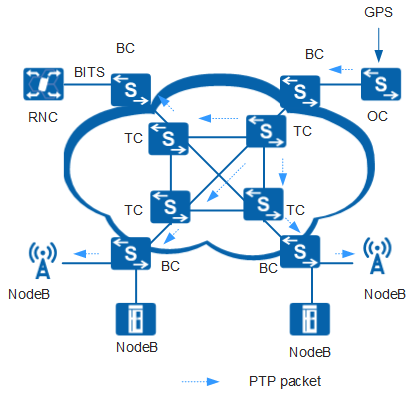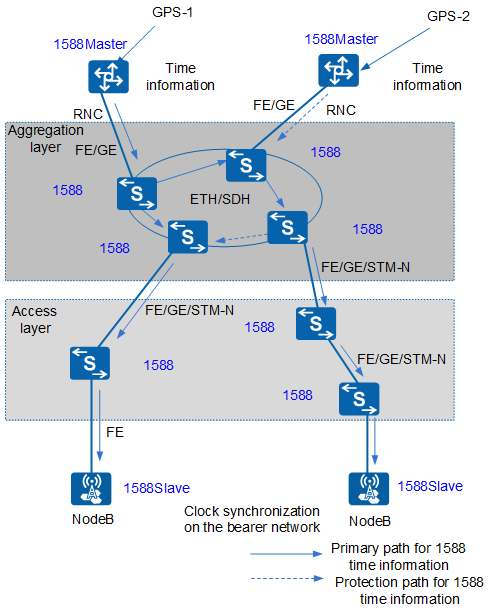Application Scenarios for PTP
PTP Application on a Transmission Network
Most of the time-division multiplexing (TDM) service on a traditional fixed network is the voice service. If the clocks on two ends of the transmission network are different, the accumulated difference between the clocks will cause clock slip. In Figure 1, an ordinary clock (OC) device encapsulates high-precision clock information obtained through the GPS into a PTP message and sends the PTP message to a boundary clock (BC) device on the transmission network. Core devices on the transmission network function as transparent clock (TC) devices to transparently transmit the clock information to the entire transmission network. Then the edge devices of the transmission network function as BC devices to provide the high-precision clock information obtained through the PTP message to wireless access devices, such as NodeB and radio network controller (RNC).
Network Protection
PTP supports protective switchover between devices and between components on the same device to prevent single-point failures. In Figure 2, the solid lines identify the primary clock tracing path. The time source is provided by GPS-1 and is transmitted to the lower layers in the direction shown by the blue arrows. The dashed lines identify the protection path. When the primary path is faulty, GPS-2 can replace GPS-1 to provide the time source rapidly.

